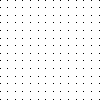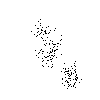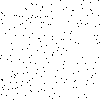Tools for archaeometry and archaeometallurgy in R
Install from GitHub
# installinstall.packages("devtools")
devtools::install_github("iramat/iRamat")Load the iRamat package
library(iRamat)Connect the database API with the default parameters, and show the first row, using the db_api_connect() function
df <- db_api_connect()The default dataset is dataset_adisser17
names(df)
# [1] "dataset_adisser17"The dataset can by accessed by its name:
head(df$dataset_adisser17, 2)| site_name | id_chips | sample_name | typology | na | mg | al | si | p | s | cl | k | ca | mn | fe | loi | ag | arsenic | ba | be | bi | cd | ce | co | cr | cs | cu | dy | er | eu | deltafe56 | deltafe57 | ga | gd | ge | hf | ho | indium | la | li | lu | mo | nb | nd | ni | os | os187_os188 | os187_os186 | pb | pd | pr | rb | ru | sb | sc | se | sm | sn | sr | sr87_sr86 | ta | tb | te | th | ti | tl | tm | u | v | w | y | yb | zn | zr | major_method | major_analytical_setup | trace_method | trace_analytical_setup | reference | url |
|---|---|---|---|---|---|---|---|---|---|---|---|---|---|---|---|---|---|---|---|---|---|---|---|---|---|---|---|---|---|---|---|---|---|---|---|---|---|---|---|---|---|---|---|---|---|---|---|---|---|---|---|---|---|---|---|---|---|---|---|---|---|---|---|---|---|---|---|---|---|---|---|---|---|---|---|---|---|---|---|
| Aux Minières | 4967 | MINHAO108-A | NA | 0.04 | 0.03 | 3.23 | 4.45 | 0.04 | 0.00 | 0 | 0.07 | 0.09 | 0.03 | 53.17 | 7.90 | NA | 578.900 | 20.31 | 13.500 | 0.308 | 0.325 | 56.06 | 26.590 | 214.9 | 0.971 | 5.587 | 5.025 | 2.637 | 1.387 | NA | NA | 7.478 | 4.960 | 2.61 | 1.431 | 0.938 | 0.475 | 21.24 | NA | 0.372 | 5.362 | 2.808 | 24.37 | 63.140 | NA | NA | NA | 113.8444 | NA | 6.119 | 4.692 | NA | 127.50 | 1.342 | NA | 6.095 | 0.945 | 43.73 | NA | 0.227 | 0.843 | NA | 17.38 | 0.092 | NA | 0.397 | 9.352 | 857.3 | 0.563 | 22.17 | 2.776 | 112.60 | 58.04 | ICP-OES | CRPG - Thermo Fisher Scientific Icap 6500 | ICP-OES | CRPG - Thermo Fisher Scientific Icap 6500 | Alexandre Disser, Philippe Dillmann, Marc Leroy, Maxime L'Héritier, Sylvain Bauvais, Philippe Fluzin (2017), Iron Supply for the Building of Metz Cathedral: New Methodological Development for Provenance Studies and Historical Considerations, Archaeometry, 59 | https://onlinelibrary.wiley.com/doi/full/10.1111/arcm.12265 |
The chrono() function models the chronological attribution of the site by creating a timeline:
df <- db_api_connect()
chrono(d = df$dataset_adisser17)PeriodO periods can also be displayed. The default Periodo authority (i.e. a set of different periods identified by the same author) is INRAP: Institut National de Recherches Archeologiques Preventive.
periodo(min_date = -700, max_date = 0, use_periodo = TRUE, time_match = 1)Site and PeriodO timelines can be merged into a single plot:
df <- db_api_connect()
plots <- chrono(df$dataset_adisser17, use_periodo = TRUE)
ggpubr::ggarrange(plots$sites, plots$periodo$periodo,
heights = c(1, 2), ncol = 1, align = "v")The ppa() function performs different point pattern analysis (PPA) on raster grids or spatial data. It could be used to assess if a point distribution is regular, clustered or random.
Run the function with its default parameters:
d <- ppa()d is a hash-like object (similar to a Python dictionary) that stores different test outputs: Quadrat test, K-Ripley test, G-function test. Let's call some of these results:
Check the Quadrat test of the clustered distribution
d[["clustered_distribution.png"]]$quadrat Chi-squared test of CSR using quadrat counts
data: pp
X2 = 732.01, df = 24, p-value < 2.2e-16
alternative hypothesis: two.sided
Quadrats: 5 by 5 grid of tiles
plot(d[["clustered_distribution.png"]]$ripley, main = "clustered distribution")plot(d[['regular_distribution.png']]$gfunction, main = "regular distribution")







